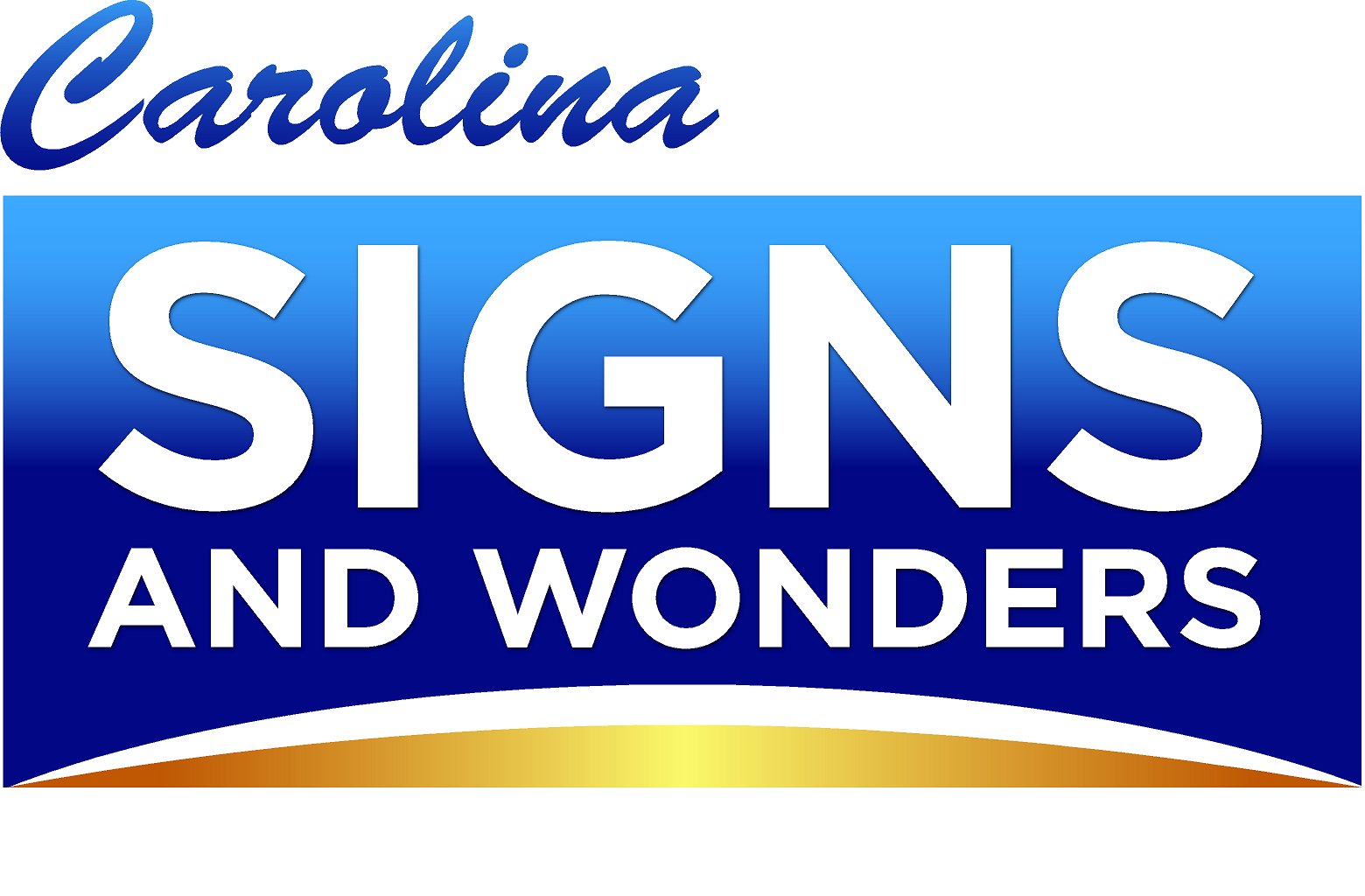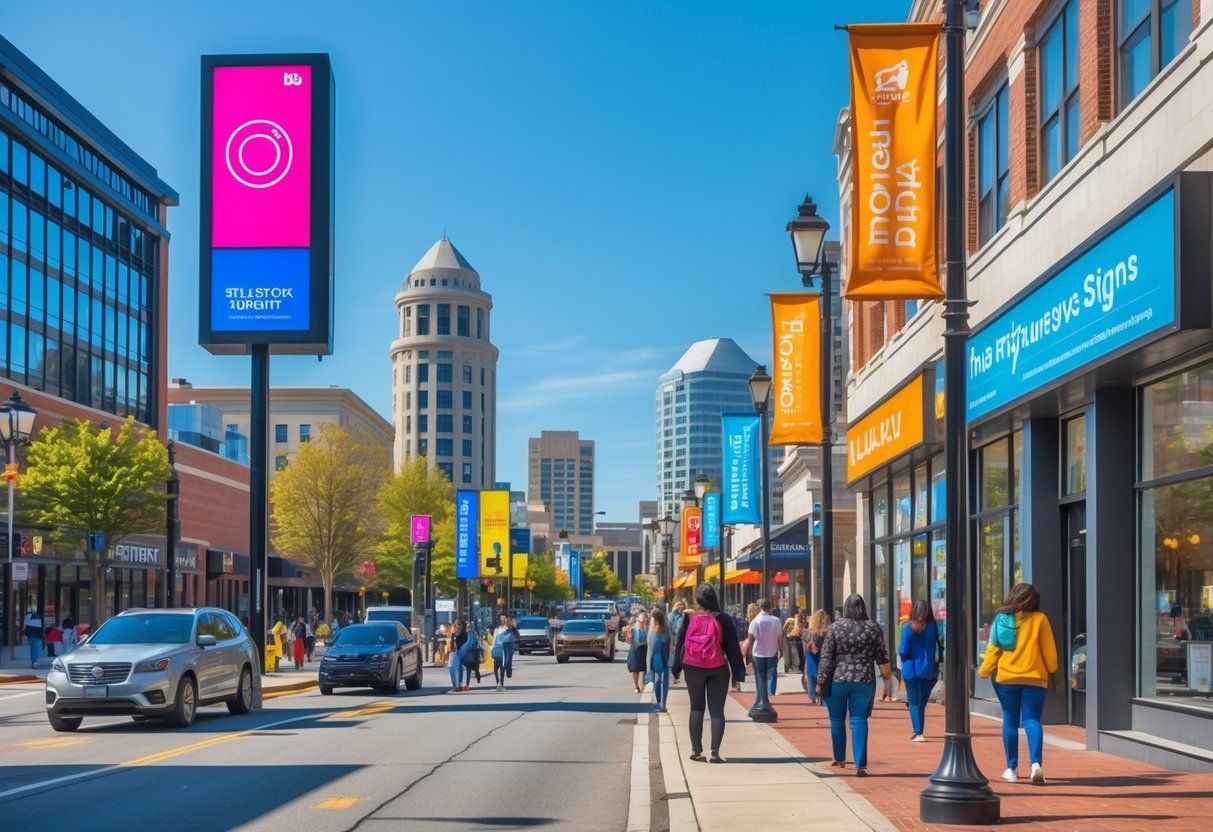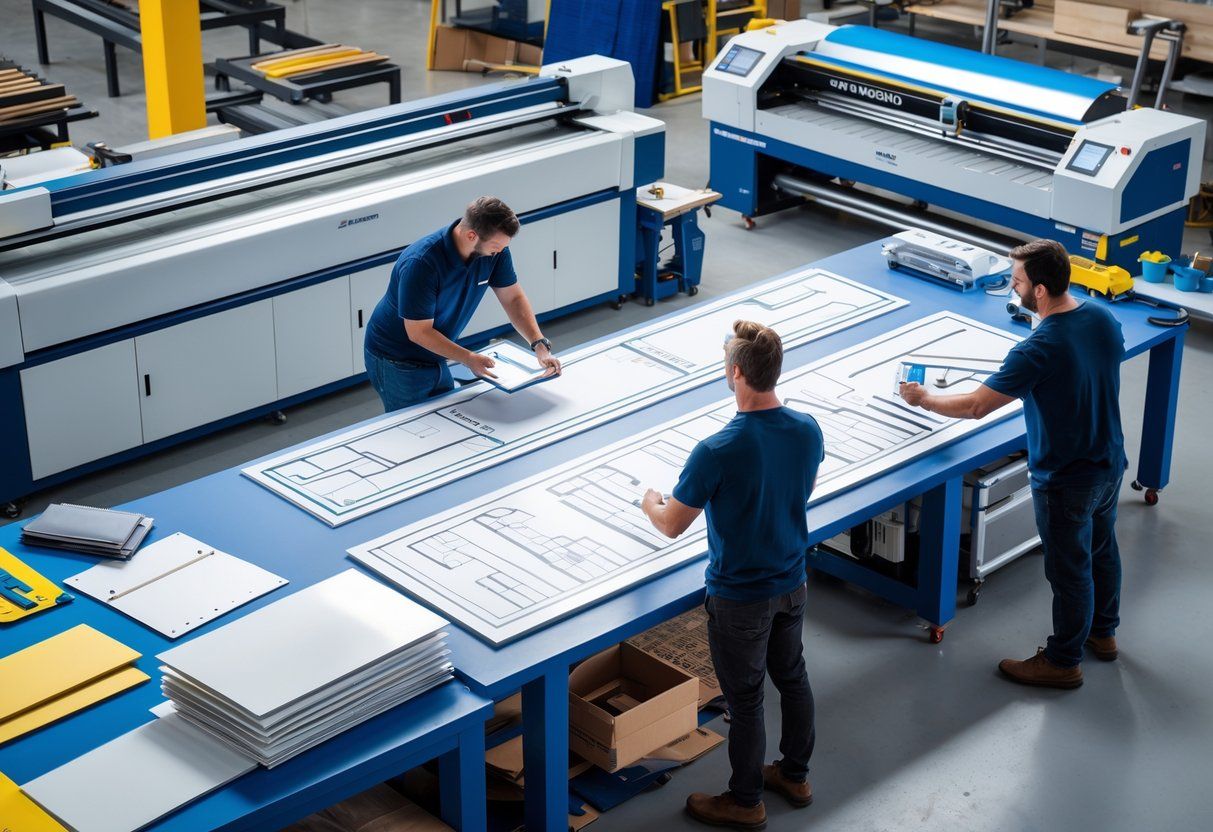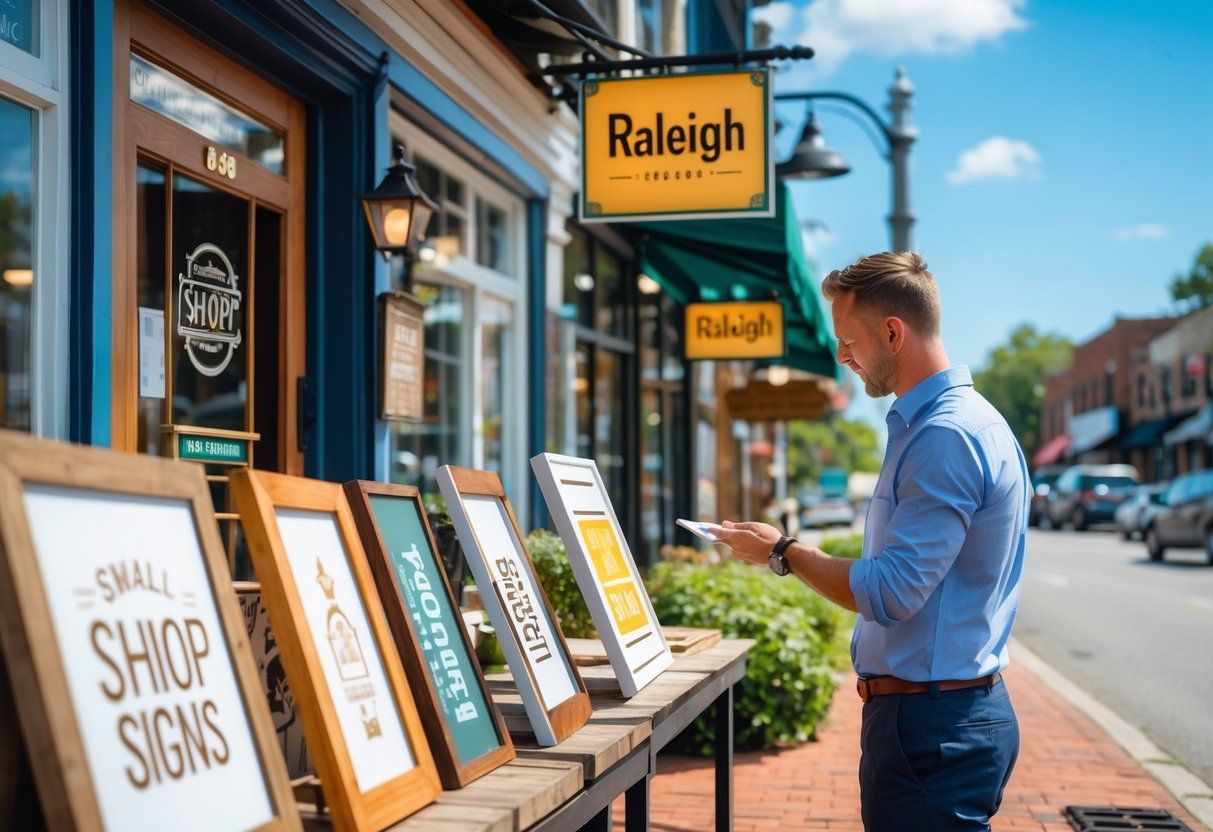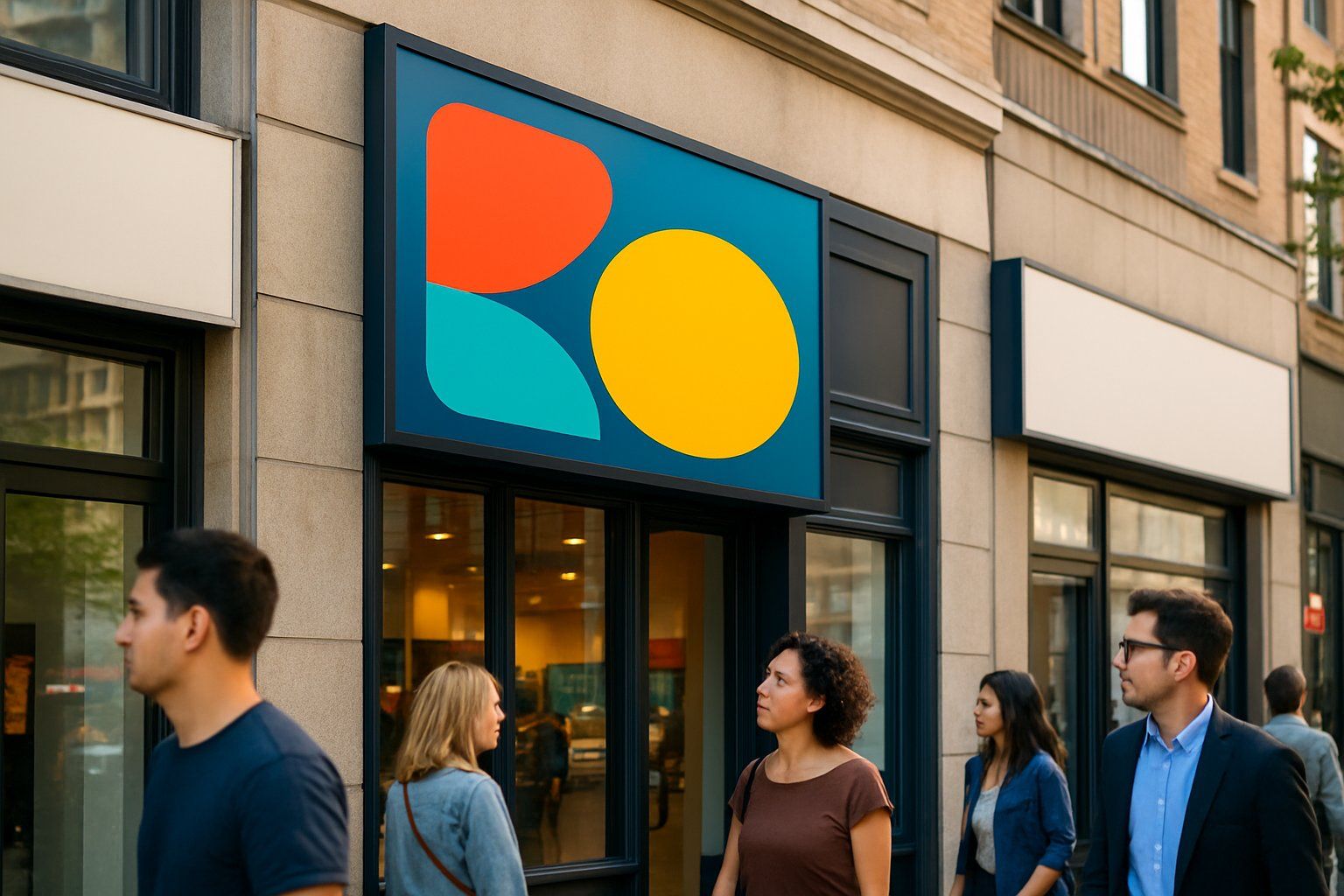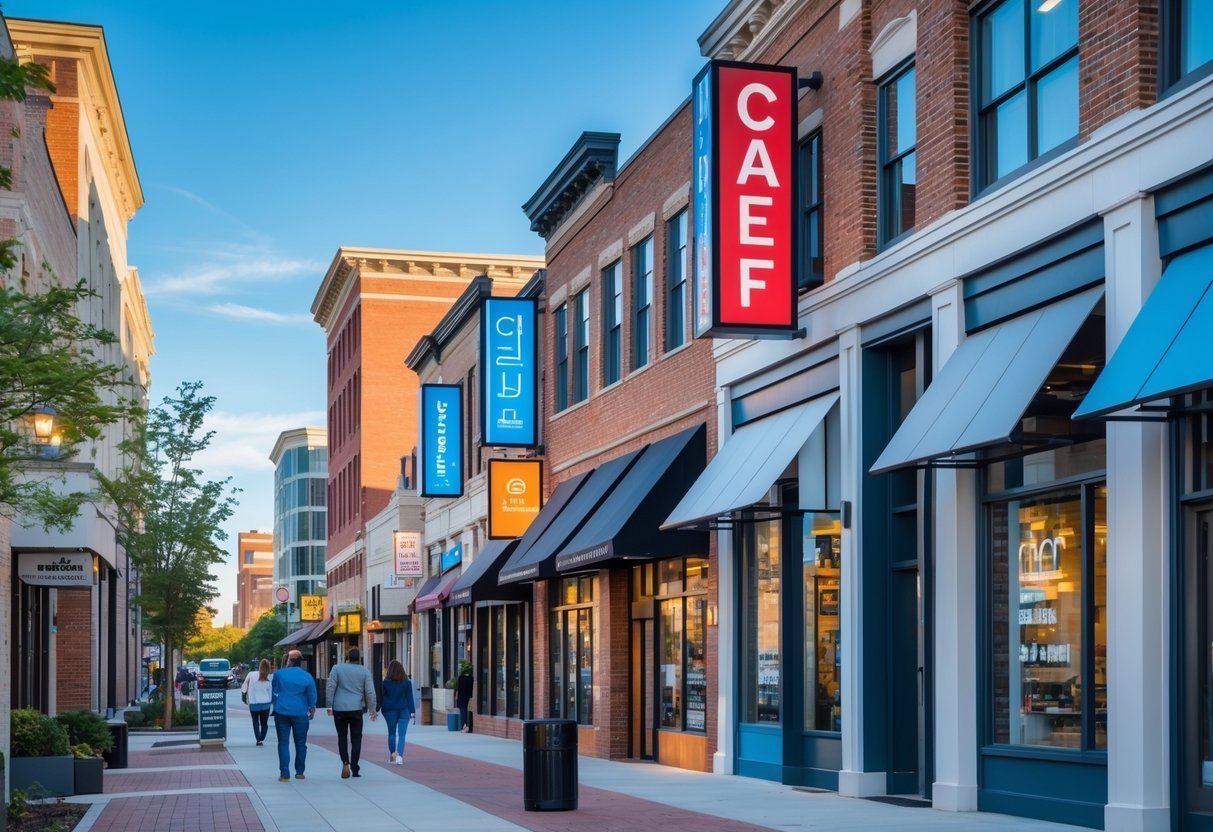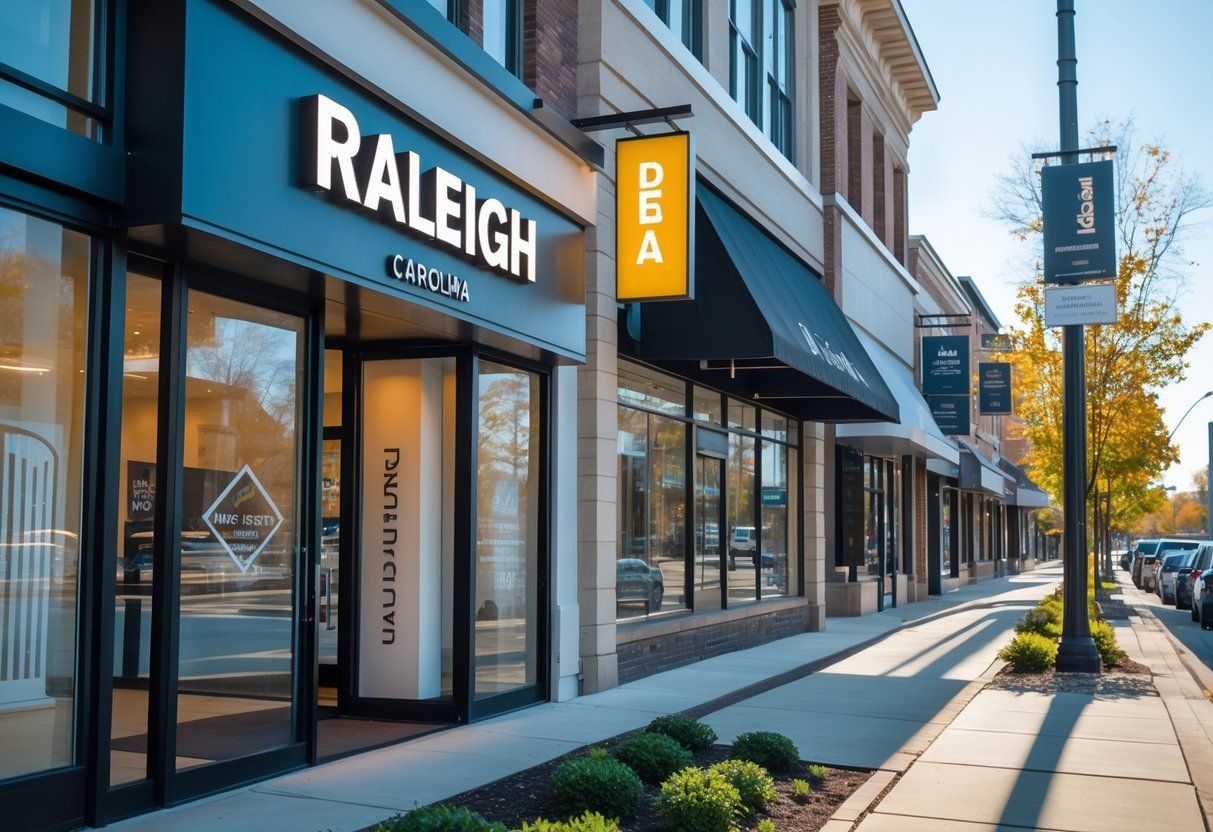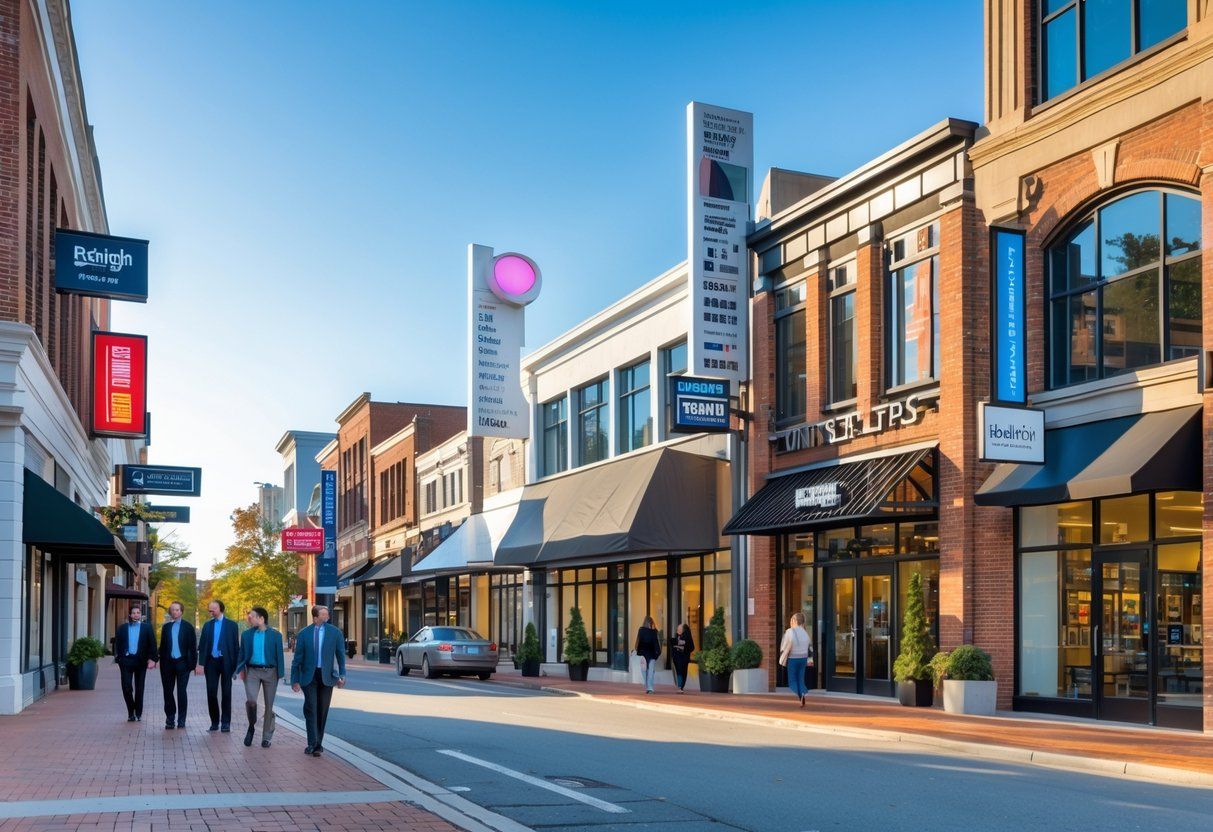Materials Used for Building Signs: Essential Options and Durability Insights
Signs are made from many different materials, each with its own strengths and uses.
The most common materials used for building signs are acrylic, aluminum, PVC, wood, and various fabrics.
Choosing the right material depends on where the sign will be placed and how long it needs to last.
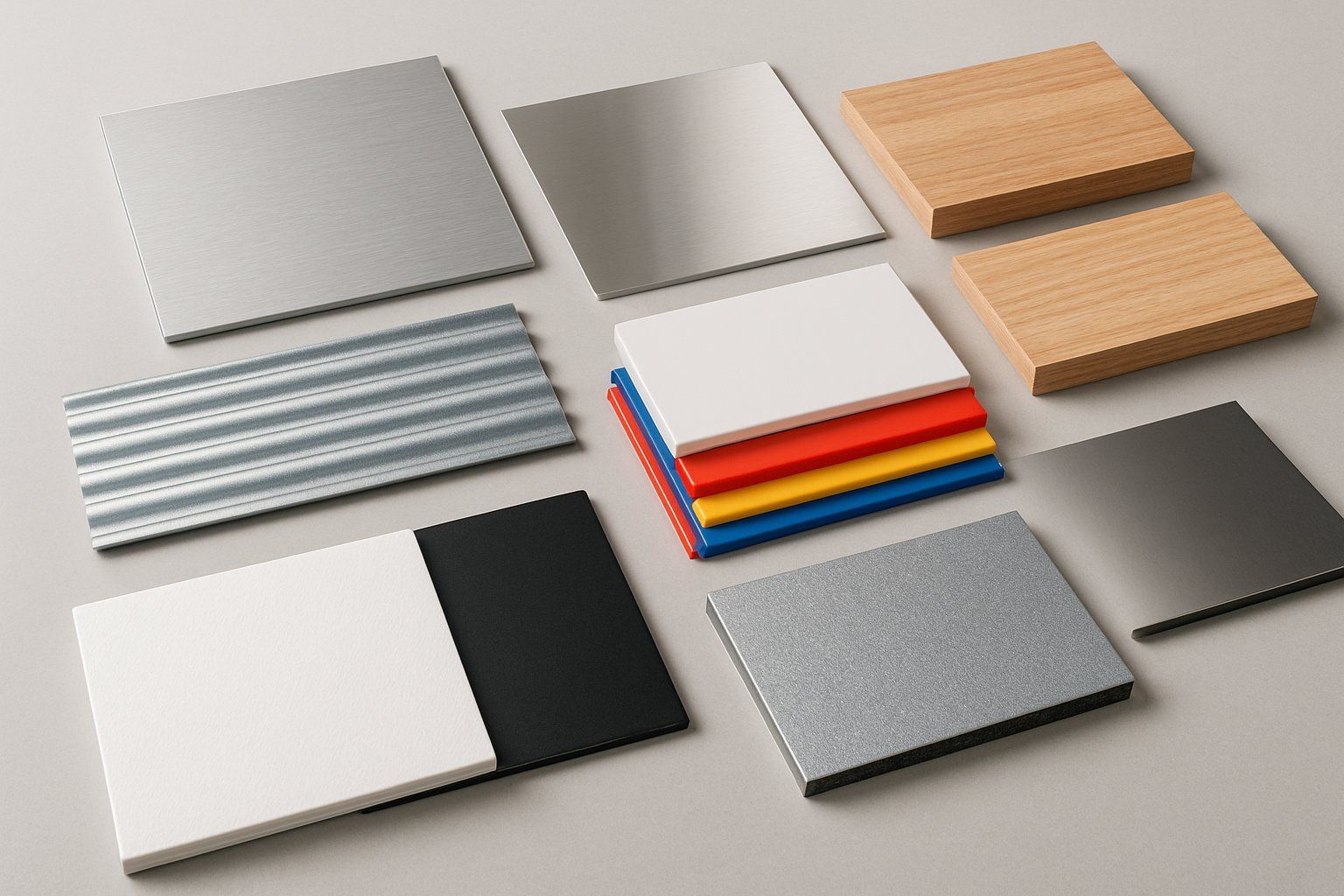
Acrylic and aluminum are popular for their durability and clean look.
PVC and wood offer more affordable and customizable options.
Fabric and banner materials are often used for temporary or outdoor signs because they are lightweight and easy to install.
Key Takeaways
- Signs are made from different materials suited for various uses.
- Durability and cost vary widely between materials.
- Material choice impacts the sign’s appearance and lifespan.
Overview of Materials Used for Building Signs
Building signs require materials that match their purpose, location, and design.
Choosing the right materials helps ensure durability, visibility, and effectiveness.
Various factors like weather, budget, and style affect material choice.
Understanding Sign Materials
Sign materials include a wide range of options such as metal, plastic, wood, and composite boards.
Metal signs, like aluminum and stainless steel, offer strength and weather resistance.
Plastic materials, such as acrylic and PVC, are lightweight and easy to shape.
Wood provides a natural look but needs protection from moisture and insects.
Composite materials combine metal and plastic to balance durability and weight.
Paint and vinyl films add color and protection to many sign board materials.
The choice depends on how long the sign needs to last and the environment it will face.
Signage Applications and Types
Different buildings and locations need specific signage materials.
Outdoor signs usually require sturdy materials like metal or composite boards to handle sun, rain, and wind.
Indoor signs can use lighter materials such as foam board or plastic because they do not face harsh weather.
Types of signs include directional, informational, and promotional.
For example, directional signs need clear, visible materials with reflective coatings for night use.
Informational signs often use smooth surfaces that allow easy printing.
Each type demands materials that fit the sign’s purpose and place.
Factors Influencing Material Selection
Several factors affect which sign board material is best for a building sign.
Durability is key for outdoor use, so materials resisting rust, fading, and cracking are preferred.
Visibility involves choosing materials that show colors and text clearly in different lights.
Cost impacts decisions, balancing budget with quality.
Some materials cost less but may wear out faster.
Ease of installation also matters; lightweight materials reduce labor and support needs.
Lastly, aesthetic appeal plays a role, especially for commercial buildings wanting a professional look.
Every factor helps guide the best choice of signage materials.
Acrylic and Plexiglass Signs
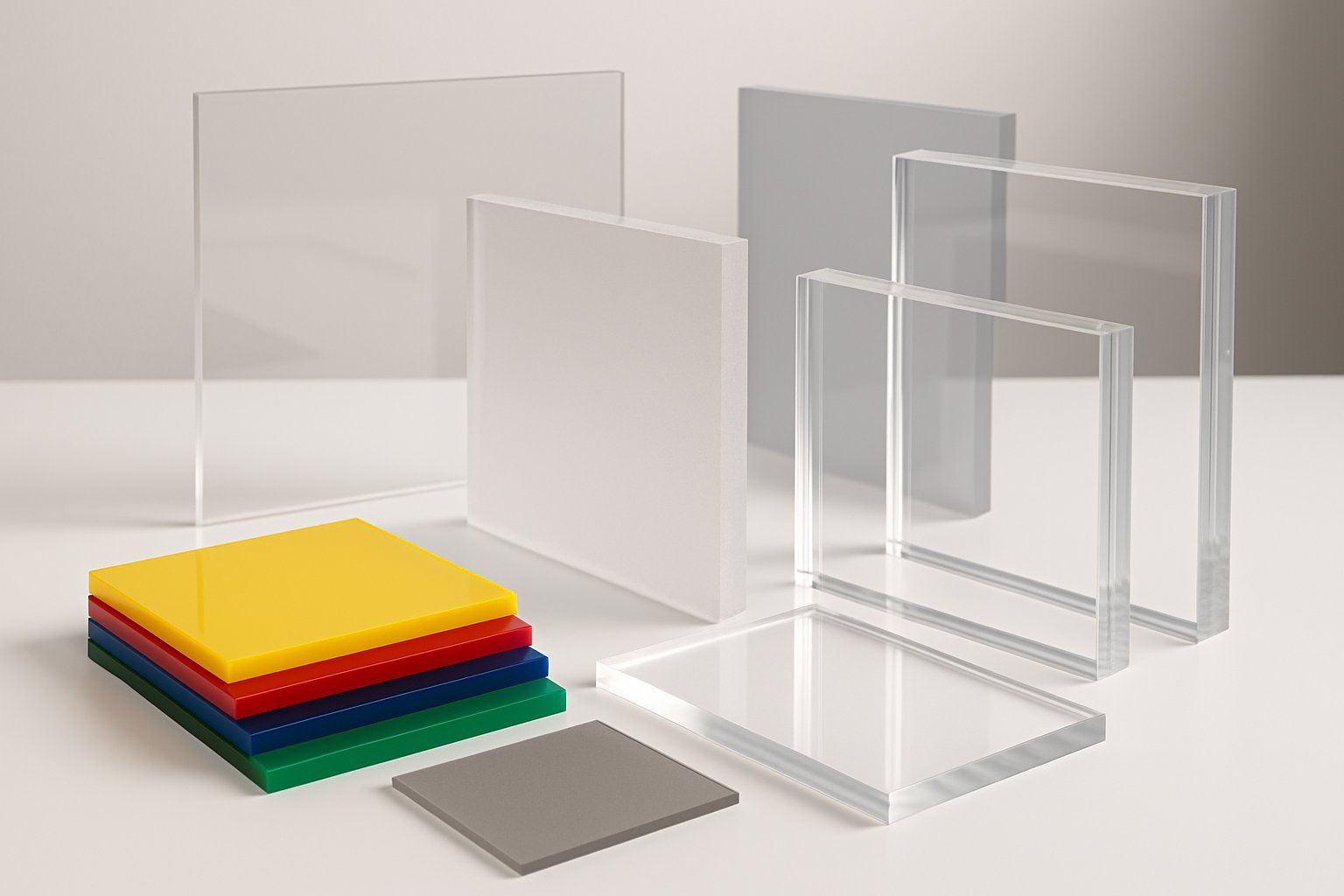
Acrylic and plexiglass are popular materials for building signs due to their clarity, durability, and versatility.
These materials work well both inside buildings, such as in lobbies, and outside where weather resistance matters.
They offer strong visual appeal and can be customized in many ways.
Features of Acrylic Material
Acrylic is a clear plastic that looks like glass but is much lighter and more flexible.
It has excellent light transmission, allowing signs to appear bright and sharp.
Acrylic is also resistant to UV light, which helps prevent yellowing over time.
This material can be cut, shaped, and polished easily, making it ideal for custom designs.
It holds paint and vinyl well, giving signs a smooth, professional finish.
Acrylic is also weather-resistant, which means it won’t crack or fade quickly when used outdoors.
Acrylic Signs for Indoor and Outdoor Use
Acrylic signs work well indoors in areas like lobbies, where clear and attractive signage is important.
The material’s smooth surface and glossy finish provide a modern look.
Indoor acrylic signs are often backlit or paired with vinyl graphics for more impact.
For outdoor signs, acrylic withstands rain, wind, and sun exposure without deteriorating fast.
It performs best when used with protective coatings or combined with materials like aluminum frames.
Outdoor acrylic signs remain readable and attractive for years.
Advantages of Plexiglass
Plexiglass is a brand name similar to acrylic but is known for its toughness.
It is shatter-resistant, making it safer than glass in busy environments or places with high traffic.
Plexiglass is easy to clean and maintain.
It can resist chemicals and scratches better than many plastics, so signs stay clear and readable.
Its strength and weather resistance make plexiglass suitable for both indoor and outdoor signs, including durable lobby signs that require clear visibility over time.
Aluminum and Aluminum Composite Options
Aluminum materials are widely used in sign making for their strength and flexibility.
They offer good resistance to weather and can be made in various shapes and sizes.
These options serve well in outdoor signage and are often chosen for their durability and appearance.
Aluminum Signs: Characteristics and Benefits
Aluminum signs are made from solid sheets of aluminum, which makes them lightweight but strong.
They resist rust and corrosion, which is important for signs exposed to rain or snow.
Aluminum signs also handle sunlight well, so colors stay clear and bright longer.
These signs are easy to clean and maintain.
They do not bend easily, so they keep their shape over time.
Aluminum signs are commonly used for street signs, business fronts, and parking areas because of their durability and professional look.
Aluminum Composite Panels
Aluminum composite panels consist of two thin aluminum sheets bonded to a non-aluminum core, usually made of plastic.
This design makes the panel strong but lighter than solid aluminum.
It also adds rigidity, preventing warping even in large signs.
These panels are smooth and flat, which helps paint and vinyl stick better.
They are often chosen for building signs that require sharp images and letters.
Aluminum composite panels are also weather-resistant and work well for outdoor displays that need to last for years.
Cost-Effectiveness of Aluminum Materials
Aluminum and aluminum composite materials often provide a good balance between price and performance.
Aluminum signs tend to cost more than plastic but offer a longer lifespan due to weather resistance and durability.
Aluminum composite panels can be more budget-friendly than solid aluminum while still offering strong support and good weather protection.
When considering installation, their lighter weight can reduce labor costs and make handling easier.
This makes aluminum options a cost-effective choice for many outdoor signage needs.
PVC and Polyvinyl Chloride Signage
PVC is a popular material for signs because of its strength and flexibility.
It works well for indoor signage and wayfinding signs, offering durability without being heavy or costly.
Properties of PVC Materials
PVC, or polyvinyl chloride, is a type of plastic known for being lightweight yet tough.
It resists moisture, making it good for areas where signs might encounter humidity.
The material can be cut, shaped, or printed on easily, which helps create clear, sharp images and text.
PVC signs hold their color well and don’t fade quickly under indoor lighting.
They also provide a smooth surface, which is ideal for detailed graphics.
Because PVC is rigid but not brittle, it can withstand normal wear and minor impacts.
PVC vs. Polyvinyl Chloride
PVC and polyvinyl chloride are the same material but the term PVC is often used when talking about it in everyday products.
Sign makers use “PVC” more often, but both refer to the plastic used to make indoor signage and wayfinding signs.
The difference usually comes in how the material is processed.
PVC for signage might be treated with additives to improve flexibility or color stability.
Polyvinyl chloride as a chemical term covers all forms, including pipes and sheets, while “PVC” in signs specifically means sheets or boards suitable for printing or cutting.
Wood and Medium Density Overlay
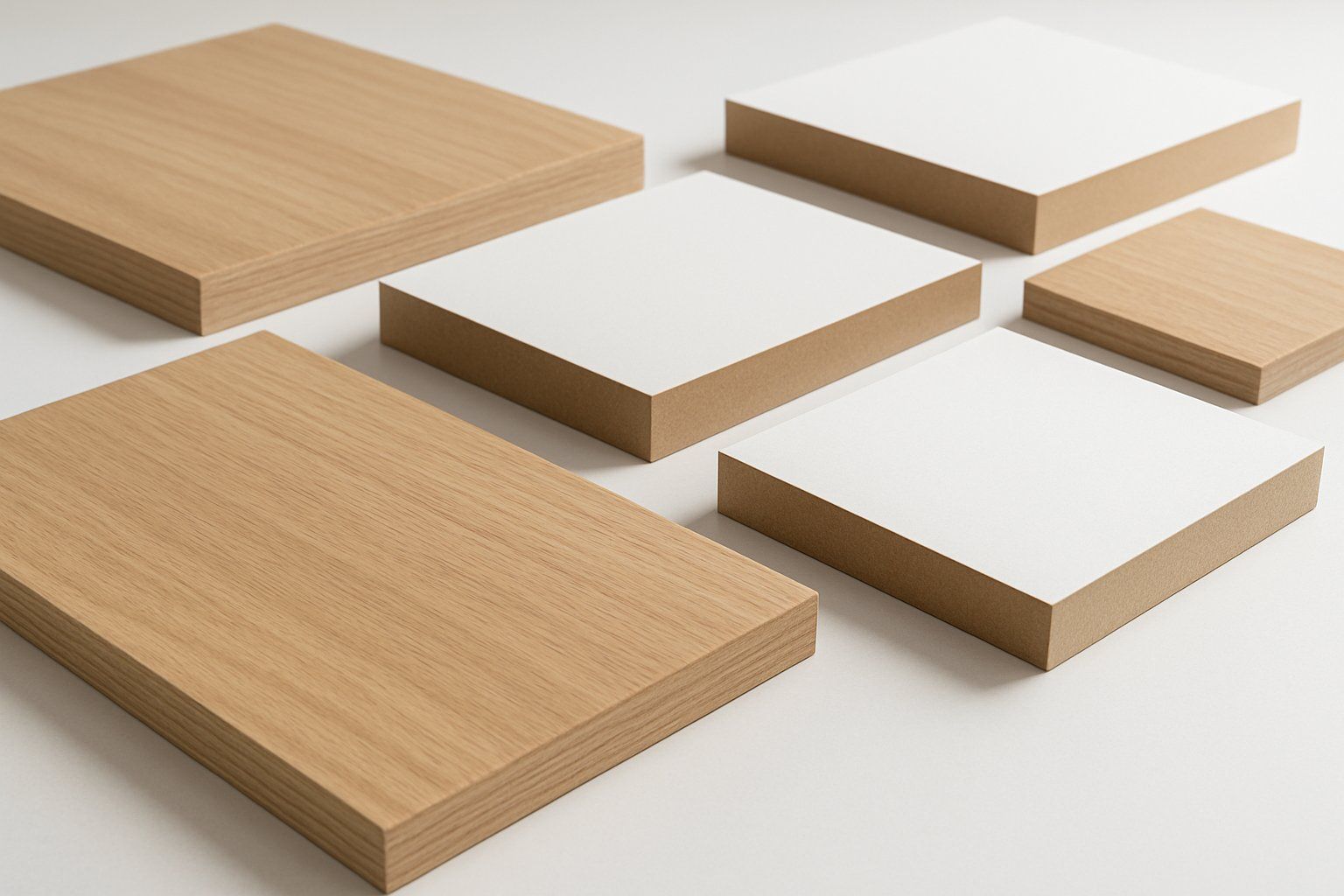
Wood and Medium Density Overlay (MDO) are common materials for building signs.
Wood provides a natural look and durability, while MDO offers a smooth surface perfect for painting or applying graphics.
Both are widely used in outdoor applications like real estate signs.
Benefits of Wooden Signs
Wooden signs are valued for their strength and classic appearance.
They resist weather well when properly treated or sealed.
Cedar and redwood are popular types because they naturally resist decay and insects.
Wood signs can be carved or painted for a custom look.
This makes them ideal for businesses wanting a traditional or rustic style.
They are also sturdy enough for long-term outdoor use, which suits signs that need to last through different seasons.
Medium Density Overlay (MDO) Applications
MDO is a type of plywood with a smooth, weather-resistant overlay.
It is designed specifically for outdoor signs that require sharp, clean graphics.
The overlay prevents paint from soaking into the wood, which keeps signs looking fresh longer.
Real estate signs often use MDO because it is lightweight and easy to handle.
These signs last through sun, rain, and wind without losing color or shape.
MDO also supports vinyl lettering and screen printing well, making it a versatile choice for clear, readable signs.
Banner and Canvas Materials
Banners and canvas are common materials used for signs, especially when flexibility and cost are important.
Each material has specific qualities that make it suitable for different types of signs, from outdoor advertising to short-term promotion.
Banner Material Types
Banners are most often made from vinyl , mesh , or fabric .
Vinyl banners are strong, waterproof, and work well outdoors.
Mesh banners have small holes to let air pass through, which helps prevent damage in windy areas.
Fabric banners look more like cloth and are best for indoor use because they are lightweight and easy to move.
Banner materials vary by thickness, measured in mils (thousandths of an inch).
Thicker banners last longer but may cost more.
Printing on vinyl is common because it holds colors well, making signs visible from far distances.
Canvas for Temporary Signage
Canvas is a type of fabric made from cotton or synthetic fibers.
It is often used for temporary signage because it is easy to print on and lightweight.
Canvas signs can be rolled or folded, making them simple to store and transport.
Because canvas is breathable, it is good for short-term outdoor signs.
However, it is not as water-resistant as vinyl, so it may wear out faster in wet weather.
Canvas signs are popular for events like fairs and markets where signs need to be put up quickly.
Advantages of Banners
Banners are popular due to their affordability , versatility , and ease of installation .
They can be hung on walls, fences, or frames, making them adaptable to many locations.
Banners are also reusable if stored carefully, especially those made from durable vinyl.
Another advantage is the high-quality printing options that allow for bright graphics and clear text.
This helps attract attention in crowded spaces.
Since banners come in many sizes, they can fit small storefronts or large outdoor spaces without extra cost for custom materials.
Specialty Signage Materials
Some signage materials offer unique benefits that suit specific uses or surfaces.
They can improve visibility, add depth, or provide easy removal and replacement.
Using these materials depends on the sign’s purpose and place.
Magnetic Signs
Magnetic signs use strong magnets attached to a flexible magnetic sheet.
They are ideal for temporary or movable signs.
Businesses often place them on metal surfaces like cars or trucks to advertise and remove them without damage.
These signs resist weather and are easy to swap.
The magnetic backing sticks firmly but peels off without leaving glue or residue.
They are best for smooth, clean metal surfaces and are not suited for rough or painted areas.
Magnetic signs come in different thicknesses and can be printed with full color.
They work well for promotions, real estate, or event signage that needs quick changes.
Dimensional Letters and Signs
Dimensional letters and signs are three-dimensional shapes, often made of metal, plastic, or foam.
These signs create depth and shadows, making the text or logos stand out compared to flat signs.
They are common for storefronts, office signs, and building names.
Materials used include acrylic, aluminum, PVC, and high-density urethane.
The choice depends on durability, indoor or outdoor use, and cost.
Mounting options vary.
Letters can be flush-mounted, raised on spacers, or backlit with LEDs for better night visibility.
Dimensional signs last long and give a professional, high-quality look.
Vehicle Wraps
Vehicle wraps use large vinyl sheets that cover cars or trucks with full graphics. These wraps protect the vehicle’s paint and turn it into a mobile advertisement.
The vinyl material is flexible and adhesive, designed to handle curves and corners. It can last for years if applied well and maintained.
Wraps come in many finishes, including matte, gloss, and textured options. They require professional installation to avoid bubbles and peeling.
Vehicle wraps are popular for business branding because they reach many people while on the road. They can be removed or updated without harming the original paint.
Application-Based Materials
Different types of signs need specific materials based on where and how they are used. Choosing the right material helps ensure durability, visibility, and suitability for the environment.
Wayfinding and Pylon Signs
Wayfinding and pylon signs often use durable materials like aluminum, steel, and high-density polyethylene (HDPE). These materials resist weather and impact damage, making them ideal for outdoor use.
Aluminum is lightweight and resists rust, so it suits pylon signs that need to last years outdoors. Steel offers more strength but can be heavier and may require coatings to prevent rust.
HDPE is a tough plastic often used for its weatherproof and low-maintenance properties. Both sign types usually have UV-resistant vinyl graphics for clear and long-lasting text and images.
Reflective sheeting is also common to improve visibility at night.
Window Graphics and Wall Murals
Window graphics usually use vinyl films that stick directly to glass. These films can be translucent, frosted, or clear, depending on the design needs.
They are easy to install and remove without damaging surfaces. Wall murals require heavy-duty vinyl or mesh materials to handle large surfaces and outdoor conditions.
Mesh is good for windy places because it lets air pass through, reducing wear. Both applications need inks that resist fading from sunlight and cleaning.
People choose digital printing for detailed and colorful designs.
Door Signs and Floor Graphics
Door signs often use acrylic, metal, or plastic materials. Acrylic offers a smooth, glossy finish and works well indoors.
Metal is sturdier and better for heavy-use areas. Plastic signs are lighter and more affordable for temporary or movable needs.
Floor graphics require anti-slip vinyl with strong adhesive to stay put and keep people safe. These graphics are designed to handle foot traffic and cleaning.
Both types use vinyl overlays to protect printed designs from scratches and wear.
Sign Durability and Design Considerations
Choosing the right materials impacts how long a sign will last, how it looks, and how much it costs.
Material Longevity and Weather Resistance
Materials like aluminum and high-density plastics resist rust, corrosion, and fading better than wood or untreated metals. Aluminum is popular because it stays strong in rain, sun, and snow.
Vinyl used on signs offers good weather resistance but can crack in very cold weather. Acrylic works well for illuminated signs because it resists UV rays and does not yellow quickly.
Signs exposed to harsh environments benefit from added coatings like powder coating or laminates to extend life. Without protection, even durable materials can deteriorate faster due to sun, moisture, or wind.
Aesthetics and Design Flexibility
Materials affect the sign’s look and design options. Acrylic and PVC allow smooth, bright finishes and can be easily cut into complex shapes.
They work well for modern, colorful signs. Metal signs offer a classic, sturdy look but have limited color options unless painted or coated.
Wood gives a natural appearance but requires maintenance to keep its look over time. Illuminated signs often use clear or frosted acrylic because it diffuses light evenly.
This material choice helps keep signs visible day and night with a clean finish.
Choosing the Right Material for Your Needs
The choice depends on how long the sign must last, where it will be placed, and budget limits. For permanent outdoor signs, aluminum or acrylic with weather-resistant coatings are cost-effective and durable.
Temporary or indoor signs can use lower-cost materials like foam board or corrugated plastic. These are lightweight and easy to change but don’t hold up well outside.
For illuminated signs, acrylic is best because it balances durability and light diffusion.
Frequently Asked Questions
Signs use different materials based on where they are placed and how long they need to last. Cost, strength, and resistance to weather all play a role in choosing the right material.
What are the most durable materials for outdoor signage?
Aluminum is very durable and resists rust and corrosion. It can last many years outside.
PVC and acrylic are also strong but may fade over time in direct sunlight. Steel is sturdy but can rust if not treated.
What are the cost-effective options for outdoor sign materials?
Corrugated plastic is inexpensive and lightweight, making it popular for short-term signs.
Vinyl banners are low-cost and easy to replace. They work well for temporary use but are less durable.
What types of materials are commonly used for indoor signs?
Foam board and acrylic are common indoors due to their clean look and ease of printing.
PVC and wood also work indoors where there is less exposure to moisture or harsh light.
How do the materials used for real estate signs differ from other types?
Real estate signs often use corrugated plastic or aluminum for balance between cost and durability.
They are usually lightweight for easy installation and removal but strong enough to handle outdoor conditions.
What materials are typically used for weatherproof outdoor signs?
Weatherproof signs often use aluminum or treated steel with UV-resistant coatings.
Vinyl graphics over these bases help protect the printed images from rain, wind, and sun.
Which materials are best suited for high-traffic street signs?
High-traffic street signs usually use aluminum with reflective sheeting for visibility.
These materials resist impact and weather. They ensure clear readability at all times.…
